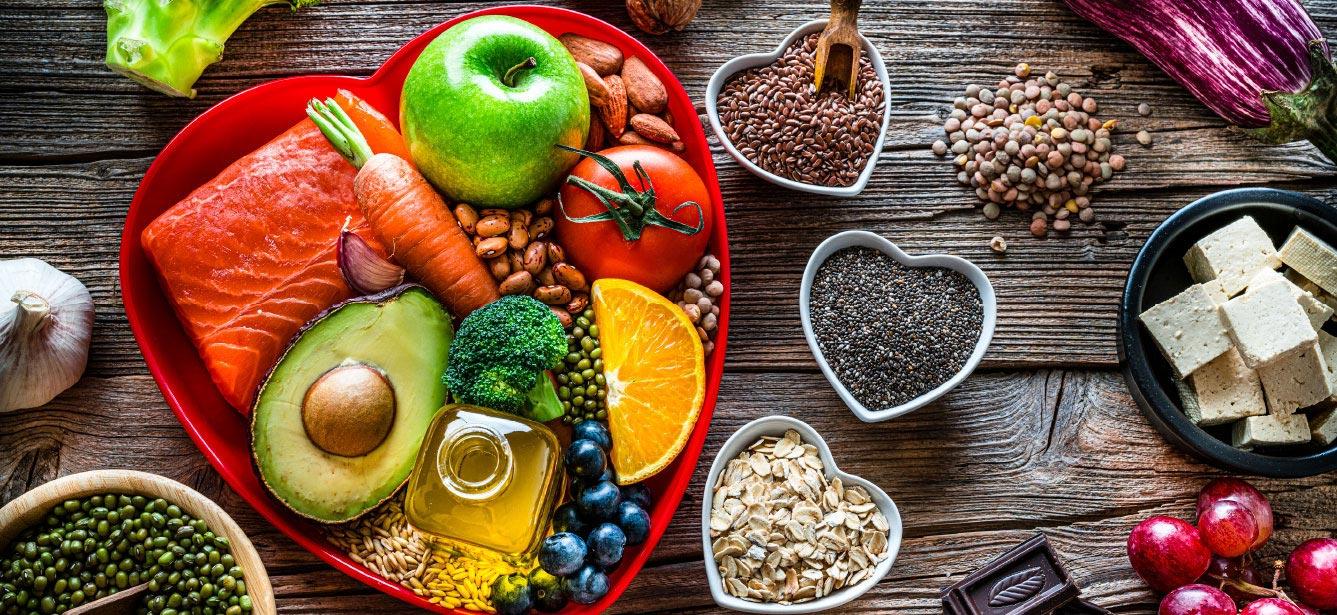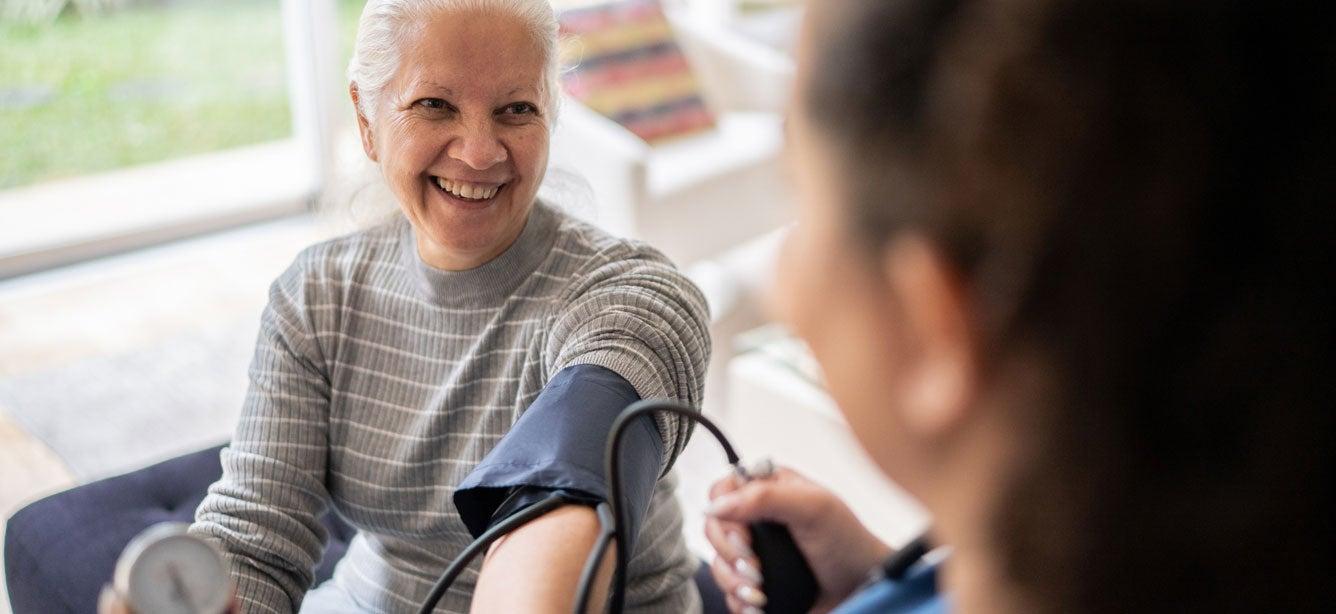
Related Topics
Heart disease continues to be the leading cause of death for Americans across most racial and ethnic groups. But you can take action to lower your risk of heart attack and stroke. What’s one of the most important steps for a healthy heart? It’s eating right combined with a healthy lifestyle. The foods you choose every day greatly affect your cardiovascular risk factors, such as blood pressure, blood sugar, cholesterol, and inflammation.
With grocery prices skyrocketing, how do you eat heart-healthy on a budget? Luckily, eating well does not have to cost a fortune. You just have to do a little preparation to shop smarter—and we’re here to help.
Shopping tips for heart-healthy eating on a budget
The foods below are the foundation of a heart-friendly eating plan. Here’s how to get the most for your money.
Fruits and vegetables
Depending on your individual calorie needs, older adults should aim for:
- 2 to 3.5 cups of vegetables daily. Your first 2 cups should focus on lower-calorie vegetables such as cucumbers, celery, broccoli, arugula, and eggplant. One cup of vegetables is about 10 broccoli florets.
- 1.5 to 2 cups of fruits daily. Focus your first 1.5 cups on lower-calorie fruits such as strawberries, grapefruit, cantaloupe, and watermelon. One cup of fruit is equal to about 8 large strawberries.
Here are ways to save on produce:
- Buy in-season. During times of the year when certain produce is plentiful, it usually costs less. For example, strawberries and blueberries cost less in the spring and summer when they’re in season. Apples, on the other hand, tend to be cheaper in the fall.
- Buy frozen and canned fruits and veggies. Frozen and canned produce generally contains the same amount of nutrition as fresh produce, but typically costs less. For frozen produce, choose plain fruits and vegetables with no added sugar. If you’re buying canned vegetables and beans, opt for varieties labeled as “lower sodium” or “no salt added.”
- Focus on less expensive vegetables when planning your meals, such as cabbage, carrots, zucchini, and bok choy. You should also consider vegetables high in fiber such as broccoli, Brussels sprouts, and green beans. Fiber is an essential part of healthy eating for older adults.
- Avoid pre-chopped fresh produce. While these foods are convenient, you’ll pay a premium. Stick with fruits and veggies in their natural form and do the peeling and chopping yourself.
Grains
When it comes to grains, older adults should focus their diet on whole grains versus refined grains. Whole grains are rich in fiber and phytonutrients that have antioxidant and anti-inflammatory properties that can support health. Dried grains are a handy option that provide a base for easy, heart-healthy meals. Stock your pantry with affordable staples like brown rice, barley, millet, oats, and whole-wheat pasta.
Protein foods
- Plant-based protein: Foods like tofu, beans (canned or dry), lentils, and legumes cost less than meat—but they’re packed with protein and heart-healthy fiber. Save money by looking for recipes that use these lean protein foods as a meal base. Add crunch and boost your protein intake by including seeds and nuts in recipes, or as snacks. Nut butters, such as peanut butter, can be another tasty, low-cost way to meet your daily required protein intake. Just watch out for added fats and salt with these items.
- Animal-based protein: If you love meat, you don't have to give it up completely to eat heart-healthy. But follow these tips:
- Limit your servings to 3 ounces or less and aim for lean cuts of beef, poultry, or pork.
- Eggs are a simple, tasty source of protein and other key nutrients. And, contrary to popular belief, they're not necessarily bad for your heart health. Recent studies show that one egg a day is safe for most people. Just don't pair it with saturated fat sources like bacon, butter, and bakery muffins.
- Eat lean red meat (beef, lamb, pork) no more than 1 to 2 times per week, since it’s high in saturated fat.
- Buy value packs of meat, poultry, and fish and freeze what you don’t use right away. You’ll almost always pay less per pound.
- Heart experts recommend eating fish twice a week. Although fresh fish can be costly, canned tuna, sardines, salmon, and other types of fish provide the same cardioprotective fats as fresh fish (sometimes even more) for a fraction of the price.
Dairy foods
Dairy is an under-consumed food group among older adults. Yet it's a vital source of calcium, protein, and other nutrients older Americans need to age well and maintain bone health. You can save money on dairy by using non-fat dried milk powder in place of fresh milk (add it to smoothies, soups, and sauces). Rather than buying flavored yogurt, which tends to be costlier and contains added sugars, buy a large container of plain low-fat yogurt, and top it with fruit.
Also, cheese, milk, and yogurt can be frozen just like other foods. This helps extend shelf life and reduces the amount of food you throw away.
Other tips to eat healthy for less
These money-saving tips can help you stock your pantry and kitchen with healthy foods while sticking to your budget:
- While it can be tempting to grab prepared soups, sandwiches, and meals from the grocery store, it costs less—and is often healthier—to make easy, heart-healthy meals at home.
- Steer clear of highly processed, packaged foods. Not only do these items cost more than whole foods; they are often high in sodium and added sugars, which can increase your cardiovascular risk factors.
- Plan your meals ahead of time. Create a shopping list and stick to your list while you’re in the store. Knowing exactly what you're going to eat during the week will help prevent impulse purchases. Create simple, heart-healthy menus based on whole foods, and plan your grocery shopping around those menus.
- Buy non-perishable items in bulk, such as lentils and rice. Stock up on canned goods when they go on sale.
- Buy store brands versus name brands whenever possible. According to Consumer Reports, opting for generic brands can save you 20 to 25%—and the quality is comparable to big name brands.
- Join store reward programs and tailor your meals to your store’s weekly sales flyer. Coupons are a good way to save money, too, but don’t fall into the trap of buying things you don’t need just because you have a coupon. Only use coupons for foods you buy and use regularly.
Make more heart-healthy meals with help from SNAP
Another way to follow a heart-healthy diet on a budget is to see if you’re eligible for the Supplemental Nutrition Assistance Program (SNAP). SNAP is a government program that helps older adults with low income afford fresh, nourishing foods. The average SNAP benefit for an older adult household is $188 per month.1 Imagine how much further you could stretch your budget by combining SNAP benefits with the smart shopping tips above!
“Remember that a registered dietitian nutritionist (RDN) can also help you create a heart-healthy eating plan that’s tailored to your lifestyle and health goals,” says Gretchen Tanbonliong, Associate Director for Health & Wellness at NCOA and an RDN herself. “You can find an RDN based on your location at eatright.org.”
Wondering if you meet the income limits for SNAP? Visit BenefitsCheckUp.org and enter your ZIP code to find out.
Source
1. USDA. Characteristics of Supplemental Nutrition Assistance Program Households: Fiscal Year 2023. April 2025. Found on the internet at https://fns-prod.azureedge.us/sites/default/files/resource-files/snap-FY23-Characteristics-Report.pdf




